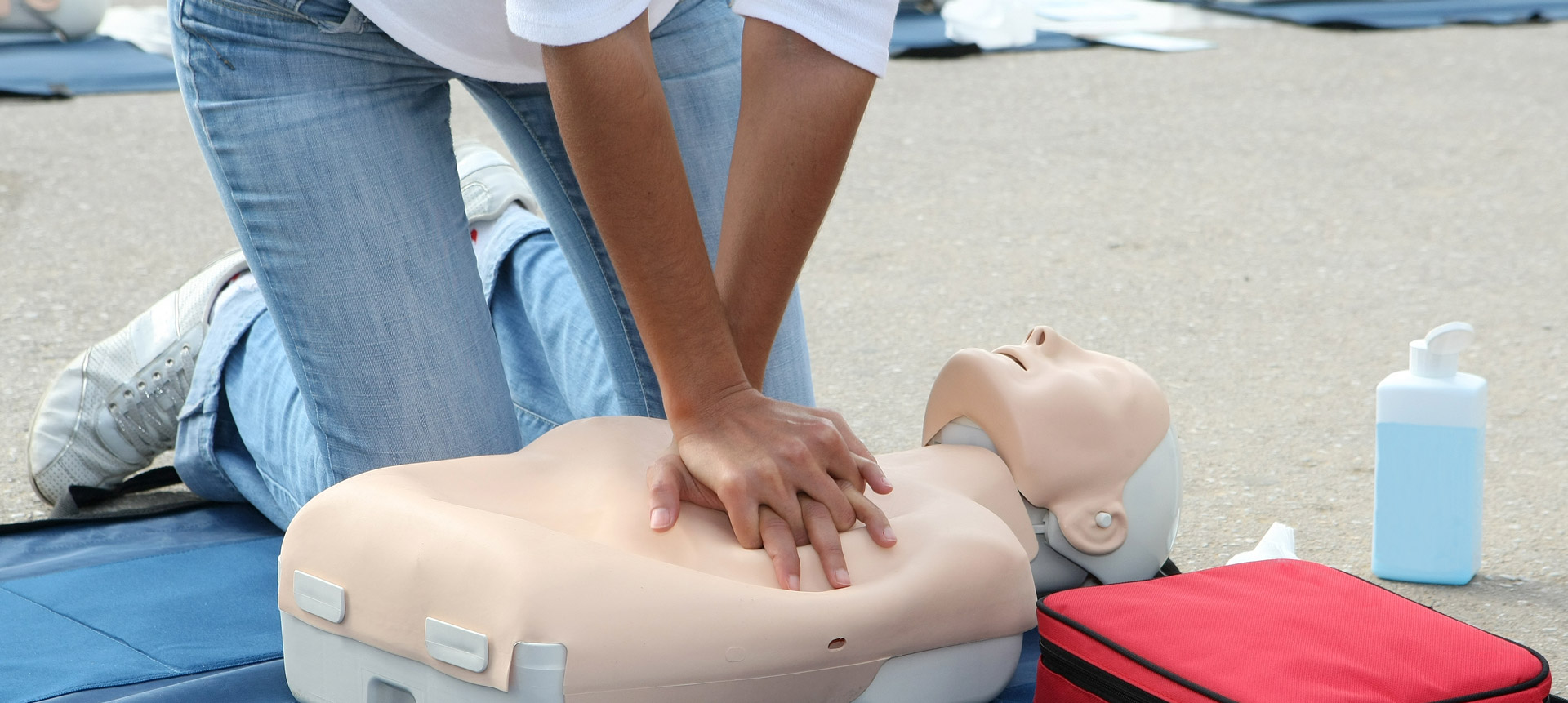How to save a life in 90 seconds
Do you have a couple of minutes? That's enough to learn the basics of CPR. Watch the short video below. Then, see how to use an AED, which can double a person’s chance of survival.

CPR training will help you know what to do in an emergency.
Watch the video Find a course Find a courseHeartsaver is the essential CPR and automated external defibrillator (AED) course. Foundational and flexible, Heartsaver provides you with the skills and confidence to respond to a cardiac arrest.
The vast majority of cardiac arrests happen at home, in public places and workplaces. If you ever witness one, chances are it will happen to a family member or someone you work with or care about.
Heartsaver is designed for people who don’t have medical training but who want to learn how to help someone having a cardiac arrest.
Our First Aid courses are designed for people who want to learn essential life support skills to better respond to emergencies at home or at work. Our First Aid courses prepare learners through instruction, demonstration and practice. Equip yourself with the knowledge and abilities needed for common health emergencies.
We are excited to introduce CardiacCrash™ – a new, innovative crash course on life-saving techniques.
It’s a team-based, gamified learning approach that is engaging and creates a memorable experience.
CardiacCrash is a new way to bring life-saving cardiac arrest education to people who want to learn how to save a life. There is a version for engaging employees at workplaces and a second version for students at middle and high schools.
To learn more about how to get CardiacCrash or how to become a facilitator, email us: cardiaccrash@heartandstroke.ca
Heart & Stroke strongly recommends that all resuscitation instructors and their students be fully vaccinated in order to create the safest possible teaching and learning environment. Heart & Stroke requires that each credentialled instructor create and implement their own COVID-19 vaccination policy and make it easily accessible to students prior to course registration to help students make an informed decision about their resuscitation education.
Basic Life Support (BLS) is the foundation for saving lives. It is designed for healthcare providers and trained first responders who provide care to patients in a wide variety of settings or by people in a healthcare training program.
Basic Life Support teaches single-rescuer and team basic life support skills for application in both pre-hospital and in-facility environments, with a focus on high-quality CPR and team dynamics.
It will train you to quickly recognize several life-threatening emergencies, give high-quality chest compressions, deliver appropriate ventilations and provide early use of an AED through simulated clinical scenarios and learning stations.
Pediatric Advanced Life Support (PALS) is an advanced resuscitation course for the recognition and intervention of cardiopulmonary arrest or other cardiovascular emergencies in pediatric patients.
This advanced-level course builds on skills learned in a Basic Life Support (BLS) Provider course and/or a Pediatric Emergency Assessment, Recognition and Stabilization (PEARS) Provider course.
Designed for healthcare providers who either direct or participate in the management of critically ill pediatric patients, learners will apply their BLS skills as well as expect practice and training in a systematic approach to pediatric assessment, treatment algorithms and high-performance teams to improve the quality of care provided to seriously ill or injured children. Become a practiced and strong member or lead a PALS team with this important training program.
The Pediatric Emergency Assessment, Recognition and Stabilization (PEARS) Provider course is an intermediary pediatric skills course that builds on BLS concepts and can be a stepping stone towards certification in pediatric advanced life support (PALS).
PEARS equips healthcare providers who periodically care for pediatric patients with foundational skills to participate in the initial management of respiratory and shock emergencies, and cardiopulmonary arrest. PEARS is designed for healthcare providers and first responders who provide care to patients in a wide variety of settings, including rural health centres, schools, or large urban health centres with diverse ranges in scope of practice among staff.
Active case-based instruction will be used to teach students to provide appropriate lifesaving interventions within the initial minutes after response until the child is transferred to advanced life support care.
Stay up to date on the latest resuscitation and first aid science as reviewed with an international panel of experts and localized for the Canadian context.
Help shape future scientific statements and treatment recommendations by reviewing and commenting on drafts.
Do you have a couple of minutes? That's enough to learn the basics of CPR. Watch the short video below. Then, see how to use an AED, which can double a person’s chance of survival.
An estimated 35,000 cardiac arrests happen each year in Canada. Knowing how to use an AED could mean saving a life.
Anyone can use an AED. Get the basics here.... Read more
AEDs are easy to use. Watch this video to see the three simple steps.... Read more
For information concerning AEDs in Manitoba including registration, please visit Shared Health... Read more